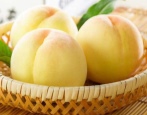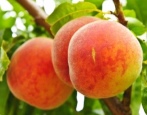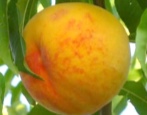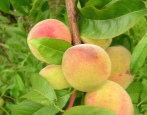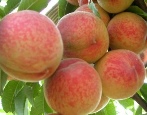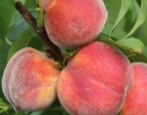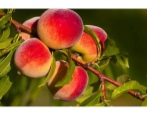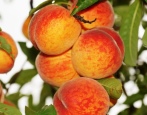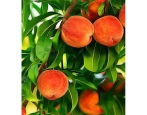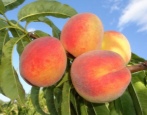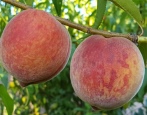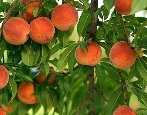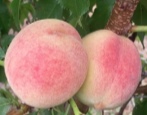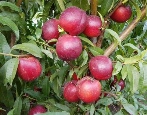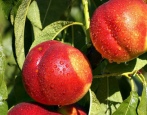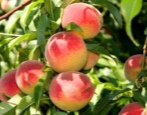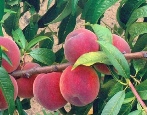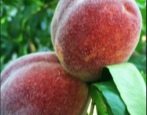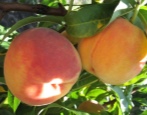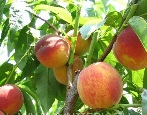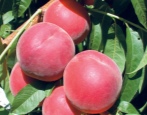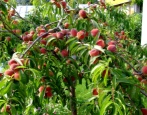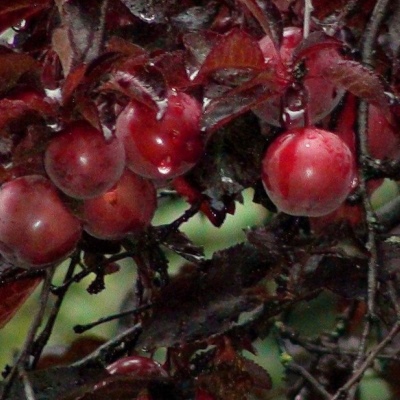
- Growth type: medium-sized
- Ripening period: late
- Self-fertility: self-fertile
- Appointment: for fresh consumption
- Yield: high
- Early maturity: from 3 years after planting
- Winter hardiness: high
- Disease and pest resistance: stable
- Fruit weight, g: 100
- Fruit color: pink
Peach Burgundy is a fairly well-known variety. It is often grown not only to obtain a rich harvest, but also to increase the decorative effect of the site and its landscaping. You can get acquainted with this plant in more detail below.
Description of the variety
The trees of the described variety are of medium growth type. The crown is quite thick, it looks impressive. An interesting feature of Burgundy is the leaves: in the summer they have a beautiful red-purple color, but in the fall they turn green, forming red veins. The Burgundy peach is grown exclusively in gardens and summer cottages, since the tree gives a lot of carrion, which would be inappropriate in urban settings.
Fruit characteristics
The pink fruits of Burgundy are not very large. Their standard weight is 100 grams, but sometimes fruits grow up to 130 grams in weight. The flesh of rounded peaches is dense and juicy, and it is not difficult to choose a pit from it.
Taste qualities
Peaches of this variety are dessert, that is, they have a sweet taste. There is almost no sourness, it can appear only in conditions of too rainy summer. The taste was rated 4.5 points.
Ripening and fruiting
Burgundy bears fruit for the first time in the third year after planting. It ripens late, bears fruit only in the last decade of August. However, all this is offset by a very long fruiting period: regular harvests from the tree are harvested for almost 50 years.
Yield
Gardeners respond well to the yield of the variety. According to them, it is very high, but more accurate data (in kilograms) have not yet been identified.
Self-fertility and the need for pollinators
The variety is self-fertile, and if grown on a site alone, it can pollinate itself, giving fruit. However, experienced summer residents know that even the best varieties pollinate themselves by no more than 60%, therefore, in order to increase yields, peaches with the same flowering period are planted nearby.
Growing and care
Burgundy must be planted exclusively on the south side of the site. Avoid completely open areas without natural defenses such as houses or mounds, and planting in low areas that are usually wet. The soil should be fertile and breathable. It is forbidden to plant on grounds where peppers, tomatoes, potatoes, strawberries, melons and gourds grew in the previous season.
Peach Burgundy is quite capricious, so it is advisable to organize fertilizers for it from the very beginning. Take 50 grams of superphosphate and potassium chloride, 0.3 kg of wood ash and about 8 kg of compost. Such fertilizers are laid in the holes during the spring planting of peaches. If the planting is carried out in the fall, then humus is simply laid in the pit. Fertilizers should last for three years.
Burgundy trees do not tolerate the lack of water very well. Therefore, you need to water the peaches in a timely manner. Every two weeks, about 20 liters of water should be poured under each tree. The last watering is carried out at the end of summer. They must be combined with loosening the soil, but you cannot go deep into the soil. Weed growth can be controlled with mulch, which responds very well to this variety.
In order to increase the health of the tree and increase the yield, pruning is recommended for the Burgundy variety. The spring shaping procedure is especially important. Sick, frost-bruised and dry branches must be removed without fail.The shoots are shortened in accordance with the chosen crown shape. And also thinning is carried out, since the crown of this variety is very thick. Trees older than seven years are subjected to rejuvenation. It should be borne in mind that the variety is often exposed to gum flow, so it is imperative to process all sections with copper sulfate, and then lubricate with garden varnish.
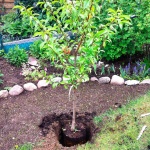
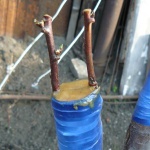
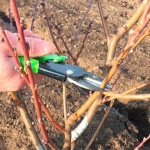
Frost resistance and the need for shelter
Peach Burgundy perfectly resists cold weather. In the southern regions, this plant may not even be covered if there is a lot of snow in winter. But if the area is characterized by too low temperatures, and snow rarely falls, then you need to take care of the shelter. After cleaning the site and whitewashing the trunks, the trees are covered with a thick layer of mulch in the form of spruce branches. The upper part of the trunk must be wrapped with any material suitable for this. It is necessary to remove the shelter only when it is certain that there are no recurrent frosts.
Disease and pest resistance
Burgundy is distinguished by good resistance to various diseases, pests also rarely parasitize on it. Sometimes the variety is affected by moniliosis, as well as curly leaves. To prevent ailments, pruning and prophylactic spraying with fungicides are carried out.
The most common pests were the peach aphid and the eastern moth. To prevent them from entering the site will allow early pouring boiling water over the trees, as well as spring treatment with insecticides.
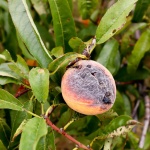
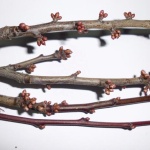
Review overview
Ornamental burgundy peach trees are popular with many gardeners. Almost all summer residents use the plant in landscape design, planting singly or in groups. Delicious, albeit small fruits, also delight those who are engaged in the cultivation of this variety. The attention of farmers is also attracted by the fact that the tree lives for a long time and bears fruit stably.
Gardeners are not very happy with the fact that the tree is very capricious in its care. It needs to be regularly watered, fed, mulched. Without pruning, the plants give a dense crown and suffer from fungus. The winter hardiness of the culture also raises separate questions.Although it is very high, trees often require shelter. In addition, in some summer residents, plants, in general, could not survive the winter. And some did not cope with pruning, having received an irregular plant shape.
